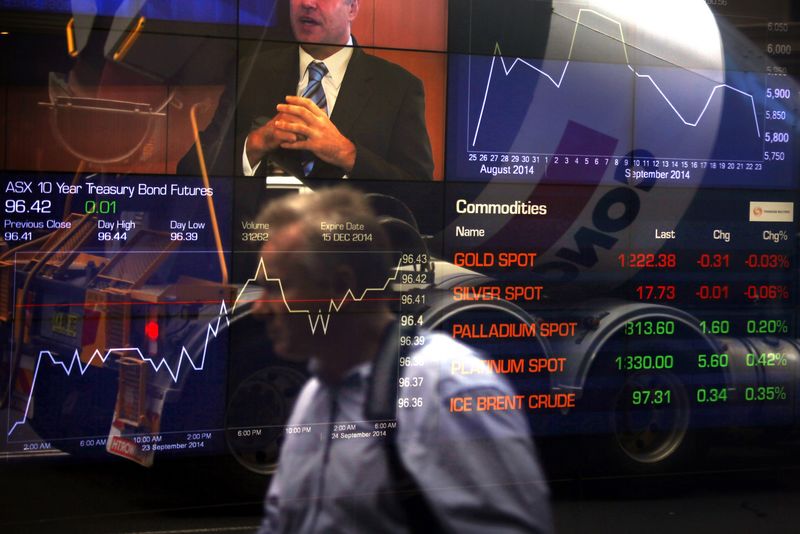Street Calls of the Week
The ASX is set to rise today. ASX 200 futures are up 0.6% at 8,472 points.
The ASX200 climbed 108 points, or 1.31%, to close at 8,393 last week, buoyed by a combination of favourable global and domestic factors.
Gains were driven by robust performances from major Australian banks, which benefitted from optimism surrounding the US banking sector following Donald Trump’s election victory, sparking expectations of reduced regulation and a pro-business environment.
A rebound in crude oil prices also revitalised the energy sector, while Australia’s relative insulation from geopolitical tensions in Europe attracted safe-haven investment.
At sector level, Energy (+4.32%) led the charge, followed closely by Utilities (+4.29%), Consumer Staples(+1.95%) and Financials (+1.80%).
Conversely, Information Technology (-2.94%) was the weakest performer, joined by marginal declines in Consumer Discretionary (-0.15%) and Real Estate (-0.03%), while Telecommunications managed a modest gain of 0.16%.
Top-performing stocks included Betmakers, which surged 22.45%, Silex Systems (+18.22%), A2 Milk (+13.31%) and Technology One (+13.26%). On the downside, Appen plummeted 24%, with notable losses from Cettire (-20.54%), CGQ Partners (-18.45%) and Pilbara Minerals (-17.41%).
“This week's key event on the local data calendar is the release of the October monthly CPI on Wednesday. As October is the first month of the new quarter, we will only get an update on about 60% of the basket,” IG Markets analyst Tony Sycamore said.
“Additionally, it will be skewed towards goods rather than troublesome service components such as dining out, medical services, and transportation.
"The preliminary expectation is for the Monthly Indicator in October to rise by 2.3% YoY. However, this will change as analysts fine-tune expectations.
"The Australian interest rate market is not anticipating a first 25bp RBA rate cut until July 2025.”
US strong but caution persists
US stocks ended the week on a strong note, with the Dow Jones Industrial Average leading gains as investors favoured cyclical stocks poised to benefit from economic resilience. However, caution persisted in the technology sector following a mixed earnings report from Nvidia.
For the week, the Dow rose 1.96%, the Nasdaq added 1.87% and the S&P 500 advanced 1.68%.
On Friday, economic data provided a boost with the US S&P Purchasing Managers’ Indices (PMIs) exceeding expectations.
The Manufacturing PMI edged higher to 48.8 in November, in line with forecasts, while the Services PMI surged to 57, up from 55 in October. This marks the fastest growth in the services sector since March 2022, underscoring the sector’s robust expansion.
“In political developments, President-elect Donald Trump has announced his nomination of Scott Bessent as the new US Treasury Secretary. Bessent’s appointment is expected to receive a tick of approval from global markets his expertise and previously stated preference that “tariffs be layered in gradually,” Sycamore said.
“In a Thanksgiving holiday-shortened week, the focus will be on the FOMC meeting minutes and the Fed's preferred measure of inflation, the Core PCE Price Index. Higher-than-expected core producer price inflation suggests that cCore PCE inflation for October will rise by 0.3%, taking the annual rate higher to 2.8% YoY from 2.7%.”
European markets rise on rate cut expectations
European sharemarkets closed higher on Friday as weak economic data across the region fuelled expectations of central bank rate cuts. Health care and retail stocks led the rally, each gaining more than 2%. The S&P Global HCOB flash composite Purchasing Managers’ Index (PMI) for the eurozone fell to 48.1 in November, down from 50 in October and below market expectations of 50.
- The FTSEurofirst 300 index rose 1.1% on Friday and 1.3% for the week.
- In London, the FTSE 100 recorded its best session since August, climbing 1.4%, and ended the week 2.5% higher, marking its strongest performance in six months.
Currencies and commodities
Currencies
In currency markets, the euro weakened against the US dollar, sliding from US$1.0496 to US$1.0338 before stabilising near US$1.0415. Similarly, the Australian dollar eased from US65.16 cents to US64.73 cents, trading near US65.00 cents at the US close, while the Japanese yen fell from 154.19 to 155.00 yen per US dollar, ending near JPY154.75.
Global oil prices advanced about 1% on Friday, reaching two-week highs as the escalating conflict in Ukraine increased geopolitical risk premiums.
- Brent crude rose US94 cents or 1.3% to US$75.17 per barrel.
- US Nymex crude gained US$1.14 or 1.6% to US$71.24 per barrel.
- For the week, Brent surged 5.8%, with Nymex up 6.3%.
Base metals were pressured by a stronger US dollar, with copper futures down 0.9% and aluminium dipping 0.6%. Weekly performance was mixed; copper rose 0.6%, while aluminium fell 0.4%.
Gold surged US$37.30 or 1.4% to US$2,712.20 per ounce on Friday, driven by safe-haven demand despite US dollar strength. Spot gold also traded near US$2,712 per ounce, gaining 5.5% for the week, its best performance since March 2023.
What about small caps?
The S&P/ASX Small Ordinaries finished 0.75% higher to 3,139.90. Over the week it was 0.54% higher.
There has been a steady flow of news this morning and you can read about the following and more throughout the day.
